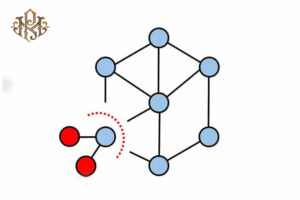
Close



One of the most common attacks in the blockchain space is the Eclipse Attack. This type of attack works based on the replacement of target nodes with malicious nodes. In this Pooyan Music article, we will explore zero to 100 eclipse attacks.
An eclipse attack involves a malicious agent that isolates a particular user or node in a decentralized peer-to-peer (P2P) network. In the execution of this attack, the attacker redirects the incoming and outgoing connections of the target from the legitimate neighboring nodes to the nodes under the control of the attacker. This effectively isolates the target and creates an isolated environment on the network.
By distorting the state of the ledger or ledger of the blockchain, the attacker gains the ability to manipulate the isolated node. This leads to the confirmation of unauthorized transactions and disruption of the correct extraction of the block.
The success of eclipse attacks depends on exploiting the connections between nodes in a blockchain network.
While the decentralized structure of most cryptocurrency protocols makes these attacks relatively less challenging than other online threats, eclipse attacks still pose a significant risk to users’ online security.
Understanding the operation of this type and adopting preventive strategies is critical to protect the integrity of blockchain networks.

Eclipse attack mechanism exploits the inherent limited connectivity of nodes in a decentralized network. These nodes are limited by bandwidth and can only communicate with a subset of neighboring nodes.
Instead of attacking the entire network, as in the Sybil attack, malicious actors only need to compromise a node’s communications with a limited set of its neighbors.
To execute an eclipse attack, an attacker often uses a botnet or phantom network to flood the target node with a flood of IP addresses.
The target node may communicate with these addresses when it reconnects to the blockchain network.
The attacker bids its time until the victim node reconnects to the malicious nodes or launches a distributed denial of service (DDoS) attack to reconnect.
Although success may require multiple attempts, when the victim node connects to nodes controlled by the attacker, it is possible to inject false data, often fooling the unsuspecting victim.
The results of an eclipse attack on cryptocurrency projects can include cost-doubling attacks and disruption of miners’ power, ultimately empowering attackers to manipulate transactions and mining results.

Defending against eclipse attacks involves proactive strategies and careful network design. Implementing preventive measures in the early stages of blockchain network development can significantly reduce vulnerabilities.
Some approaches to thwart eclipse attacks include:
Random node selection: Building a peer-to-peer network where each node connects to a random set of IP addresses during synchronization reduces the probability of connecting to attacker-controlled nodes.
Deterministic node selection: In contrast to random node selection, deterministic node selection involves inserting specific node IP addresses into predetermined fixed slots during connections. This approach complicates the attacker’s attempts to manipulate nodes and reduces the effectiveness of eclipse attacks.
Increasing node connections: Increasing the number of node-to-node connections increases the probability of connecting nodes with legitimate users and strengthens network security.
New node restrictions: Preventing the creation of new nodes in the network by introducing cost or complexity barriers sets a higher bar for attackers looking to populate the network with malicious nodes.
Cryptocurrency eclipse attacks underscore the importance of strong network architecture and security protocols in blockchain ecosystems.
While these attacks mainly affect specific users or nodes, repeated incidents can destroy trust and compromise the entire network.
To ensure the longevity and success of decentralized technologies, it is critical not only to understand the use cases and toconomics of blockchain projects, but also to examine the underlying consensus mechanisms that underlie them.